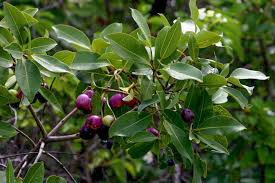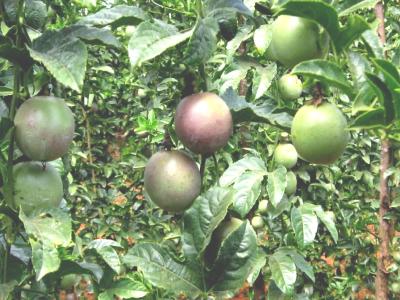By Katheru Njagi
Mary Komen’s furrowed brow lights up with a smile when she recalls the treasures she has been reaping from Embobut forest in Western Kenya.
“The herbs are free. I only need to walk through, get the right plant and then prepare medicine,” says the 44-year-old, adding that the forest at the foot of Mt. Elgon has always been her ancestral home.
But such treats may be no more. Conservationists have raised the alarm over the fast rate indigenous plant species are disappearing in Kenya. They link the loss to illegal harvesting, climate change and forest encroachment.
Komen is not a forest raider. She belongs to the Sengwer tribe, a group of forest dwellers who have been living in the forest and taking care of it.
During a reflective drift, she can count at least six plant species that families living in the forest have been using to treat diseases as severe as measles.
“We dig up the herbs, carve them from trees or pluck their leaves,” says the mother of four. “The forest is our hospital. It takes care of us and we take care of it.”
Such assurance has given Komen the strength to face odds threatening the forest, even hostile ones like the Kenya Forestry Service (KFS) rangers, who have recently been forcing her kin from the ancestral home.
“We have lived with the forest. Our blood is with the trees. This is what we want to continue doing,” she says.
Komen and her kin fear that the acres of medicinal plants and other indigenous trees found in the forest will be depleted, if her community is denied the right to continue caring and nurturing it.
 According to Yator Kiptum, a Sengwer tribe elder, KFS rangers are forcing his community to leave the forest, while allowing pastoralists and staple farmers from neighbouring communities to occupy areas where they (Sengwer) have been evicted.
According to Yator Kiptum, a Sengwer tribe elder, KFS rangers are forcing his community to leave the forest, while allowing pastoralists and staple farmers from neighbouring communities to occupy areas where they (Sengwer) have been evicted.
“The new occupants have even constructed homes inside the forest and continued the cutting of trees,” says Kiptum. “This is finishing the forest. Nobody is bothered.”
KFS denies these allegations. But the prize for such deceit is loss of indigenous knowledge, argues, Kamau Ngugi, the executive director, National Coalition of Human Rights Defenders (NCHRD).
By evicting the Sengwer from the forest, argues Ngugi, KFS is killing generations of indigenous knowledge on conservation, instead of tapping it.
“Indigenous forest communities have no hospitals but they have used local herbs and creativity within the forests to treat themselves for ages,” says Ngugi. “This is critical knowledge we are losing as a society.”
Such concerns have been troubling Kenyan conservationists for decades, especially seasoned ones like Prof. Robert Gituru. The search for a solution has been a long call, he says.
Prof. Gituru is the founding Director, Sino Africa Joint Research Center (SAJOREC), based at the Jomo Kenyatta University of Agriculture and Technology (JKUAT).
In 2014, he, in collaboration with Chinese scientists, established a botanical garden through SAJOREC, which aims to solve problems facing Kenyans like Komen.
“The idea was to have a botanical garden right next to where we are doing research,” explains Prof. Gituru, adding that it is a project between the Peoples Republic of China and the government of Kenya.
Sitting on a 40-acre piece of land at JKUAT, the facility has 37 of these covered by unique plants from Kenya and other parts of the world. The other three acres host the administrative unit, explains Prof. Gituru.
“Working with communities, we bring medicinal, indigenous and rare plant species at the botanical garden so that we can study their unique traits,” he says, adding that the knowledge is then passed back to the public.
According to him, the facility has a host of laboratories charged with the following functions: cell and molecular research, biodiversity conservation and utilization, water resources management, micro biology, geographic and remote sensing, as well as natural products development.
“To make advances in good biodiversity conservation, researchers must ensure that the public are motivated to participate by ensuring their needs, like food security, are met,” says Prof. Gituru.
He says the facility is already working with communities like the Kiambu County Herbalists and Biodiversity Conservation Association (KCHBCA).
It has also reached out to all the 47 Counties in Kenya, with requests for help to identify plants within rural jurisdictions, which are endangered, unique, or have medicinal and cultural value.
According to him, the Counties have submitted lists of plant species that they feel are endangered, threatened, or have special significance to the population.
SAJOREC on its part has dedicated itself to go to those Counties, collect the plants and transfer them to the botanical garden, he says.
“There is a hunger for conservation,” argues Prof. Gituru. “Scientists and politicians are beginning to realize that there are no two ways. It is either we conserve or perish.”
At the botanical garden, a keen visitor will notice a section reserved for endangered medicinal plants in Kenya. This is to ensure that they will be available in the years to come, explains the professor.
“Kenya is sitting on gold in terms of biodiversity,” he says, adding that a large component of pharmaceutical products originates from plants, hence the need to conserve and study them for further value addition.
Such imaginative drift seems to excite Joses Njeru, an elder with the Atiriri Bururi Ma Chuka community conservation group.
In the 54 years, he has lived around Mt. Kenya forest he has witnessed the disappearance of unique plants due to agricultural encroachment and illegal harvesting.
As the treasurer of the conservation group, he and other officials have tried to raise the issue with local authorities.
“The people entrusted with protecting the forest are the ones working with unscrupulous politicians to exploit its resources,” says Njeru. “The illegal networks are very well connected.”
As an elder who is passionate about conservation, Njeru has a tree garden at his rural home. When he identifies an endangered plant species, he picks its seeds and plants it at the garden.
His purpose is to preserve as many endangered species as he can find. But can he outdo the equally determined illegal harvesters?
“African governments must invest in investigations that track financial flows and spotlight those controlling and profiting from criminal networks exploiting natural resources,” argued Davyth Stewart of INTERPOL’s environmental security program, during the 2016 United Nations Environmental Assembly in Nairobi.
Liz Alden-Willy, an independent international land tenure specialist insists local communities must be allowed to manage natural resources to ensure that they flourish.
But human rights activist, Ngugi, is certain SAJOREC can help.
“We are working with communities to try and invite universities to build research and knowledge so as to be able to preserve natural resources,” he says. “We want the country to learn, particularly people who are concerned about research.”
Such skills transfer can also help build good international relations, argues Ma Dong, Project Officer at the Peoples Republic of China’s Ministry of Environment Protection.
The Senior Engineer working at the Vehicle Emission Control Center at the Office of Koy, says the Peoples Republic of China is keen to sign development agreements with African countries like Kenya.
“Working with UNEP we plan to help Africa adopt technologies that clean the environment and how China can make a good cooperation with Africa.”
Meanwhile, Prof. Gituru says close to 60% of Kenya’s land surface is poorly botanized, meaning it has not been explored for these unique plant species.
At the same time, it can take over 60 years for a scientist to discover a new plant species.














